Search
Search Results
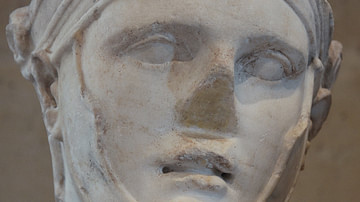
Definition
Seleucus I Nicator
Seleucus I Nicator (l. c. 358-281 BCE, r. 305-281 BCE) was one of the generals of Alexander the Great (l. 356-323 BCE) who made up the group of Diadochi ("successors") who divided the vast Macedonian Empire between them after the death of...
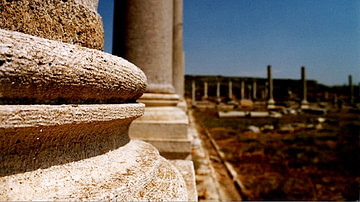
Article
The Hellenistic World: The World of Alexander the Great
The Hellenistic World (from the Greek word Hellas for Greece) is the known world after the conquests of Alexander the Great and corresponds roughly with the Hellenistic Period of ancient Greece, from 323 BCE (Alexander's death) to the annexation...
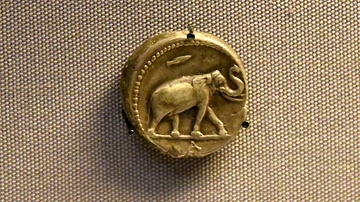
Image
Seleucid Silver Tetradrachm Depicting an Elephant
This silver tetradrachm coin belonged to Seleucos I. It depicts a striding elephant. Reign of Seleucos I Nicator, 305-281 BCE. Minted in modern-day Iran. Donated by Richard Payne Knight. (The British Museum, London).
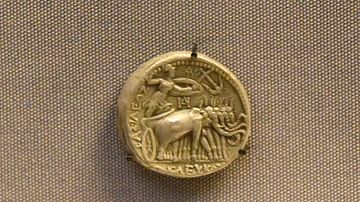
Image
Tetradrachm Coin from Seleucid Syria
This is a silver tetradrachm coin. Reign of Seleucos I Nicator, 305-281 BCE. From Seleucid Syria. Donated by the Bank of England. (The British Museum, London).
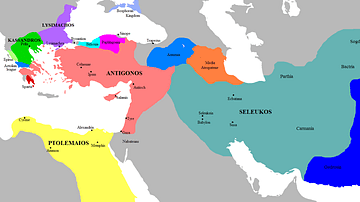
Image
Map of the Successor Kingdoms, c. 303 BCE
Map of the Diadochi successor kingdoms to Alexander the Great's empire, before the Battle of Ipsus (301 BCE).

Image
Seleucus I Nicator
Portrait of Seleucus I Nicator ( Victor), one of the successors to the kingdom of Alexander the Great upon his death in 323 BCE. This portrait is Roman and is dated to the 1st or 2nd century CE. It was found in Syria. (Louvre Museum, Paris)
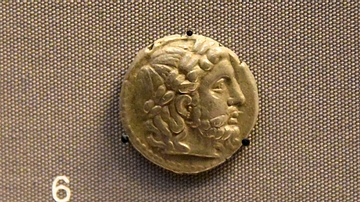
Image
Seleucid Silver Tetradrachm Coin
This silver tetradrachm coin belonged to Seleucus I. Reign of Seleucus I Nicator, 305-281 BCE. From Seleucid Syria. Donated by the Bank of England. (The British Museum, London).

Book Review
The Rise of the Seleukid Empire (323-223 BC): Seleukos I to Seleukos III
The day Alexander the Great died, his empire began to fall apart. With no clear succession plan and only an infant son's tenuous claim to Alexander's legacy, his generals were no longer united by common devotion to their leader. And so, their...
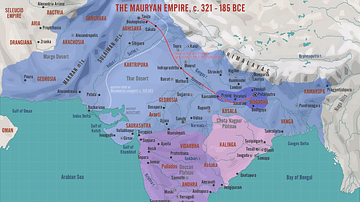
Definition
Mauryan Empire
The Mauryan Empire (322 BCE - 185 BCE) supplanted the earlier Magadha Kingdom to assume power over large tracts of eastern and northern India. At its height, the empire stretched over parts of modern Iran and almost the entire Indian subcontinent...
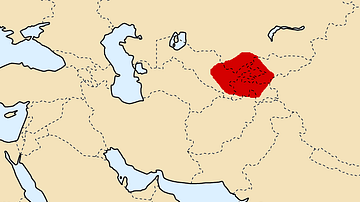
Definition
Sogdiana
Sogdiana (or Sogdia) is a region in Central Asia between the mighty rivers Iaxartes in the north and Oxus in the south. Its eastern and western limits are more difficult to determine, especially since the toponym Sogdiana covered different...